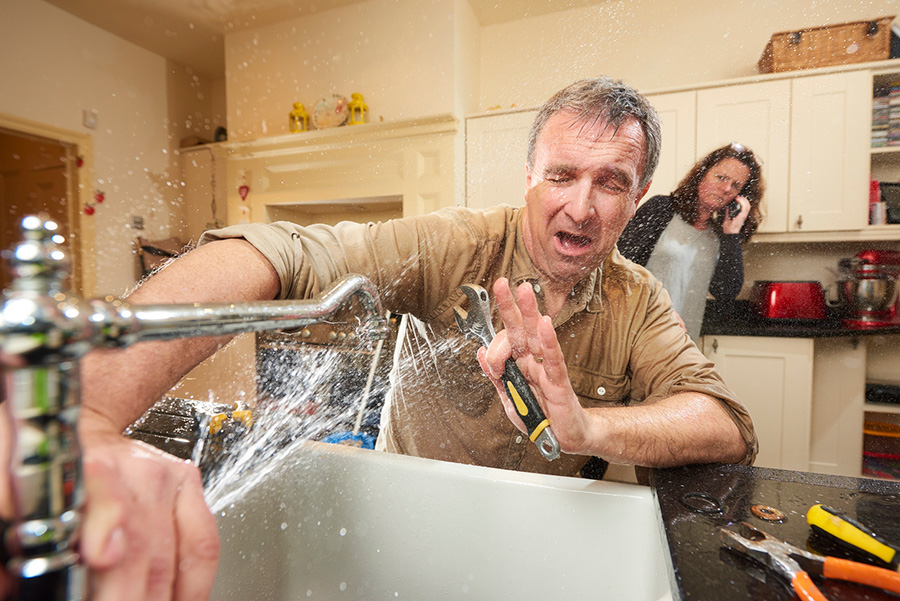Serving Nashville and the Middle Tennessee Area

The Maynard Man’s 5 Tips to Find a Plumbing Leak
Not all plumbing problems come with a dramatic burst pipe and a flood on the floor. Some leaks hide behind your walls or under cabinets, quietly wasting water and damaging your home before you even know they’re there. That’s why it’s so important to stay alert to the subtle clues your plumbing system may be giving you. The Maynard Man is here to share five smart, easy-to-follow tips that can help you find a leak early—before it turns into a costly headache. Whether you’re looking to stop water damage in its tracks or just stay ahead of rising water bills, these tips will help you spot problems, monitor usage, and take action. Let’s dive into how you can catch a leak before it catches you off guard.
Watch Your Water Bill
Your monthly water bill can tell you a lot—especially if it starts creeping up without explanation. If you’re using the same amount of water but seeing a sudden spike in cost, that’s a clear red flag. A hidden leak could be quietly draining gallons of water every day, even if you’re not seeing puddles or drips. Take a few minutes to compare your current bill to the same month in previous years. If the usage is noticeably higher but your household habits haven’t changed, there’s a good chance water is escaping somewhere. This is often one of the first signs of a problem and a great reason to start a more detailed check around your home.
Listen for Unusual Sounds
Even the quietest leaks tend to make some noise—you just have to know when and where to listen. If you hear dripping, hissing, or rushing water when no faucets or appliances are running, trust your ears. These subtle sounds often point to a slow leak behind walls, beneath flooring, or near pipe connections. Focus on quiet times in the home, like early mornings or late evenings, and walk room to room. Listen closely near bathrooms, behind kitchen cabinets, or near laundry hookups. A leak doesn’t have to be large to make noise—and catching that faint trickle early could save you from much bigger damage later.
Do a Meter Test
Your home’s water meter is one of the most reliable tools for detecting a hidden leak. To use it, first make sure all faucets, appliances, and irrigation systems are completely turned off—no water should be running anywhere in the house. Then, take note of the number on the meter. Wait 30 to 60 minutes without using any water, and then check the meter again. If the reading has changed, water is moving somewhere it shouldn’t be. This method won’t tell you where the leak is, but it will confirm that one exists—giving you a reason to investigate further or call in a pro for help.
Check for Moisture and Odors
Some leaks don’t leave a puddle—they leave a trail of subtle damage instead. If you notice warped wood floors, bubbling paint, sagging ceilings, or soft spots in your drywall, moisture could be building up behind the scenes. These visual cues often point to a leak that’s been slowly developing over time. Another key indicator? Odor. A musty or mildew-like smell, especially in bathrooms, basements, or near sinks, may signal mold growth caused by a slow leak. Don’t ignore these warning signs—even if everything looks dry. Trust your nose and your instincts. Leaks that go unchecked can quickly lead to structural damage or health concerns.
Test Toilets and Fixtures
Toilets are one of the most common sources of hidden water waste, and many homeowners never realize they’re leaking. A quick way to test? Add a few drops of food coloring to the toilet tank and wait 10–15 minutes without flushing. If the color appears in the bowl, it means water is leaking from the tank—and you’re losing gallons each day. Don’t stop with the toilet. Check under sinks, around faucet bases, and at outdoor hose connections. Even a slow drip or slight dampness when the fixture is off can indicate a leak. These small, steady losses add up fast—and catching them early means saving water, money, and your plumbing system from added strain.
Wrap-Up: Spot the Signs Early with the Maynard Man
Plumbing leaks don’t always announce themselves with a big mess—sometimes they sneak in quietly, costing you money and damaging your home over time. By staying alert to changes in your water bill, odd sounds, hidden moisture, and fixture behavior, you can catch small leaks before they turn into big repairs. The Maynard Man believes a little prevention goes a long way, and these five tips are your first defense against hidden plumbing problems. If you suspect a leak or just want peace of mind, contact Maynard Plumbing, Heating, Cooling for expert leak detection and fast, reliable repairs that keep your home protected.
Recent News
5 Signs Your Water Heater Needs Repair Before Winter Arrives in Nashville
How Regular Drain Cleaning Can Prevent Costly Plumbing Emergencies
High-ROI Home Improvements in Nashville
Energy Efficiency & Indoor Air Quality Blueprint for Tennessee Homes
Home Heating and Cooling Options: Ductless, Mini Split, and Heat Pump Explained
The Ultimate Nashville Home Maintenance Calendar
Why Indoor Humidity Matters in Nashville — from Your Experts at Maynard Plumbing, Heating & Cooling
Schedule Service


